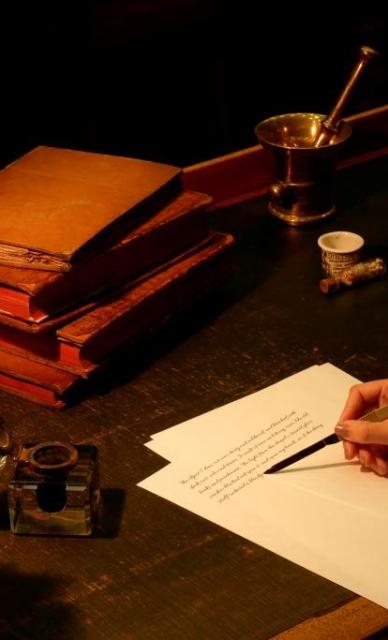Physicians' Gallery Newsletter
Updates on upcoming events, exhibitions and online stories
Empowering medical excellence, shaping healthcare futures.
These sketches and letters are the work of William Blacklock, created after he was admitted to the Crichton asylum in Dumfries. Blacklock was born in London in 1816 and, when he was two years old, his family relocated to Cumberland.

Blacklock was an established artist long before he was committed. His work had been praised by contemporaries, including J. M. W. Turner, and he had succeeded in gaining the patronage of William Gladstone. He had also exhibited at the Royal Academy and provided engravings for Sir Walter Scott's Waverley novels.


By the mid-1850s, however, Blacklock’s artistic career became threatened by illness and his failing eyesight. He had contracted syphilis, which had a significant impact on both his physical and mental health.
He shortly afterwards gave up his work and his brother, Thomas, consigned him to the Crichton institution.
The Crichton was renowned for its use of art as a form of therapeutics and patients such as Blacklock were encouraged to continue their work while they were there.
However, Blacklock’s drawings while in institutional care were quite different from his earlier work.
One of these, shown below, includes a depiction of a landscape containing what looks like a ruined building. On closer inspection, however, the tower appears to be partially made of people.

Blacklock’s work was cited by two prominent contemporary psychiatrists, the Crichton’s first medical superintendent, Dr W. A. F. Browne, and Dr Thomas Laycock. Both men used Blacklock’s artwork to demonstrate their own theories around mental health, Browne that art was key to therapeutics, Laycock that these sketches demonstrated a primitive regression in the patient.
Interestingly, neither man gave any biographical information about Blacklock in their writing, not even his name. Not only were his personal life experiences not considered in the analysis of his works but the fact that he was an established artist, something which would inevitably have had an impact on his creative output when institutionalised, was not mentioned.
Blacklock, in print, became an anonymous patient, an archetype.
Blacklock died at the Crichton in 1858 of general paralysis of the insane, another term for syphilis.
However, his work has been preserved – artworks by Blacklock are housed in the British Museum, the Victoria and Albert Museum and the National Gallery of Ireland. The illustrations shown here are part of our College’s collections.

Updates on upcoming events, exhibitions and online stories